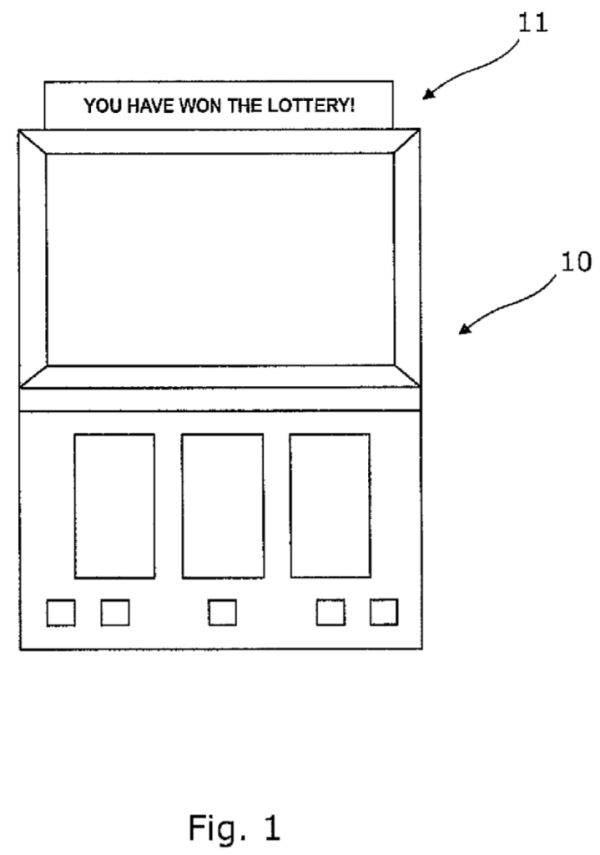In this decision, relevant for gambling machine manufacturers, the European Patent Office refused to grant a patent relating to simultaneously generating a winning outcome in game machines. Here are the practical takeaways of the decision T 0941/17 of August 11, 2021 of Technical Board of Appeal 3.4.03:
Key takeaways
The choice of a specific game to be played is an administrative decision unrelated to any technical problems or considerations.
The invention
The Board in charge summarized the invention of the application underlying the present decision as follows:
2.1 The claimed invention relates to a group of associated gaming devices, a method of operating them and an individual gaming device.
According to the application, it is desirable from time to time to have all the gaming devices in the group produce a winning outcome at the same time. Such an occurrence creates spontaneous enthusiasm with the players and draws attention to the gaming devices, increasing thus the chances that more users will start playing at those devices, increasing the profit of the devices' owner.
2.2 For this to happen it is important that all the gaming devices generate a winning game outcome at the same time. ...
2.3 The forced winning outcome is generated by a lottery drawer, irrespective of the game played at the machine. ...
2.4 By using synchronised clocks and identical databases and pseudo-number generators in the associated gaming devices the simultaneous occurrence of the winning outcomes in all the devices can be achieved (see pages 1 to 3 of the published application).

Fig. 1 of WO 2013/045276 A1
Here is how the invention is defined in claim 1:
Claim 1 (main request)
A group of associated gaming devices (10) each having a lottery drawer (25) comprising a database (18) having a plurality of entries (30, 35), each database entry (35) containing a header (36) and one or more winning numbers associated with a predetermined time interval, and
a clock (19) for extracting the winning number or numbers from a database entry (35) of the database (18) for the time interval indicated by the clock (19), and a pseudo random number generator (20) for generating pseudo random numbers from a seed supplied as header (36) of the database entry (35) by the database (18) at the beginning of the time interval as identified by the clock (19), and
a comparator (22) for at least one receiving of the extracted winning number or numbers and at least one pseudo random number generated by the pseudo random generator (20), wherein the comparator (22) is adapted for generating a win signal when the extracted winning number and the generated pseudo random number match; and
wherein all of the associated gaming devices include identical databases (18) having the plurality of entries (30) and pseudo random number generators (20) whereby win signals are generated simultaneously in each of the group of associated gaming devices (10).
Is it technical?
At the appeal stage, the Board in charge as a first step assessed the distinguishing features over the closest prior art identified during examination:
3.3 Comparing claim 1 with D5, the features distinguishing the claimed group of associated gaming devices from D5 appear to relate to how the forced winning game outcome is generated.
In claim 1 there is a lottery drawer using a pseudo-random number generator and a comparator. A database contains entries with lists of winning numbers for a specific time interval, like 24 hours, for example. At predetermined times, a seed from the specific database entry is provided to the pseudo random number generator, which generates a pseudo random number. At the same time a winning number is drawn from the list of winning numbers of the database entry. The pseudo random number and the winning number are fed to the comparator and, when the two numbers much, a winning signal will be generated.
In D5 there is no information about how the winning outcome is achieved or what game it relates to.
However, the Board considered the solution provided by the distinguishing features (a lottery drawer) to be non-technical since they would only describe a lottery game:
3.4 The board considers that the use of a draw of a lottery as a way to generate a winning outcome does not address any technical problem. In the board's view, the choice of a specific game to be played is an administrative decision unrelated to any technical problems or considerations.
3.7 The skilled person (a computer programmer, expert in gaming devices) would seek for a way to implement the winning event in the gaming devices of D5. The idea to use a lottery drawer and the rules of the "manipulated" lottery draw are not technical features and will be given to the skilled person for implementation in the associated gaming devices of D5. The skilled person would carry out this task in an obvious manner using only common general knowledge, especially since no details are provided in the application that would indicate particular technical problems to be solved or technical considerations to take into account in the implementation of the lottery drawer.
Against this assessment, the appellant argued as follows:
3.8 In its letter of 23 April 2021 the appellant put forward an argument related to the event list of D5. Making reference to paragraphs [0006] and [0007] of D5 the appellant argued that the event list in the gaming machines of D5 comprises a finite list of events to occur in specific points in time. When the point in time of the last event in the list is reached, the event list must be replaced.
In contrast to that, in the claimed invention the lottery drawer used entries from a database to create the winning events using a pseudo random number generator. The events in the database did not define a series of fixed points in time. Rather, the series of the sequential entries in the database would wrap around to the beginning when the end of the entries in the database was reached (see lines 30 and 31 on page 4 of the published application).
The use of draw of lottery in the claim, thus solved the technical problem of making the event list of D5 reusable so that the present event list need not be replaced by a new event list when its end is reached.
In response, the Board in charge explained that this line of argumentation would not relate to the claimed invention since the claim would only specify how a winning event is generated on the plurality of game devices at the same time and would thus be silent about reusing an event list. Furthermore, the arguments of the appellant would be technically incorrect:
Secondly, even if the appellant's argument is taken into account, the board notes that it is not correct that the sequential entries (30) do not define fixed points in time. As it is explained in the application (see page 4, lines 17 to 21), the sequential entries (30) correspond to a predetermined time interval, like 24 hours, and with the setting of a first date for the first entry, they correspond to specific dates (see also Figure 3). Each entry 30 comprises a list of winning numbers to be drawn on the specific date (time interval).
Sine the additional features added to claim 1 according to the auxiliary requests were considered to be disclosed by the closest prior art document, the Board dismissed the appeal due to lack of inventive step.
More information
You can read the whole decision here: T 0941/17 of August 11, 2021
The content of this article is intended to provide a general guide to the subject matter. Specialist advice should be sought about your specific circumstances.

